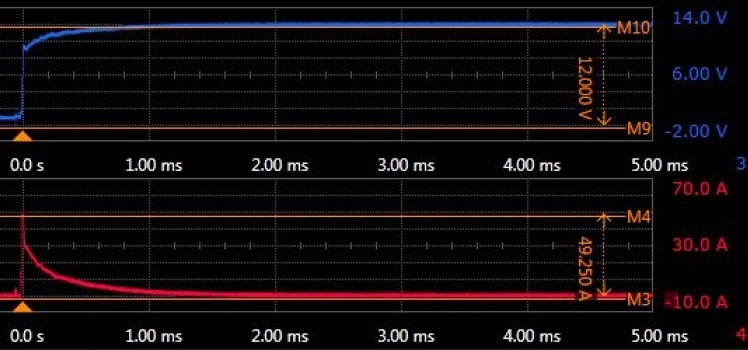Dear Engineers,
I have one concern about inrush current on input.
I desinged the board and measured inrush current.
Then I found large current "about 50A" occurred...
(please refer to the picture attached. Blue is input voltage, red is input current.)
I don't know the torelance of input inrusch current on TPS62147.
Is it capable for TPS62147? Or should I reduce the current?
Thanks at advance
Edgard


